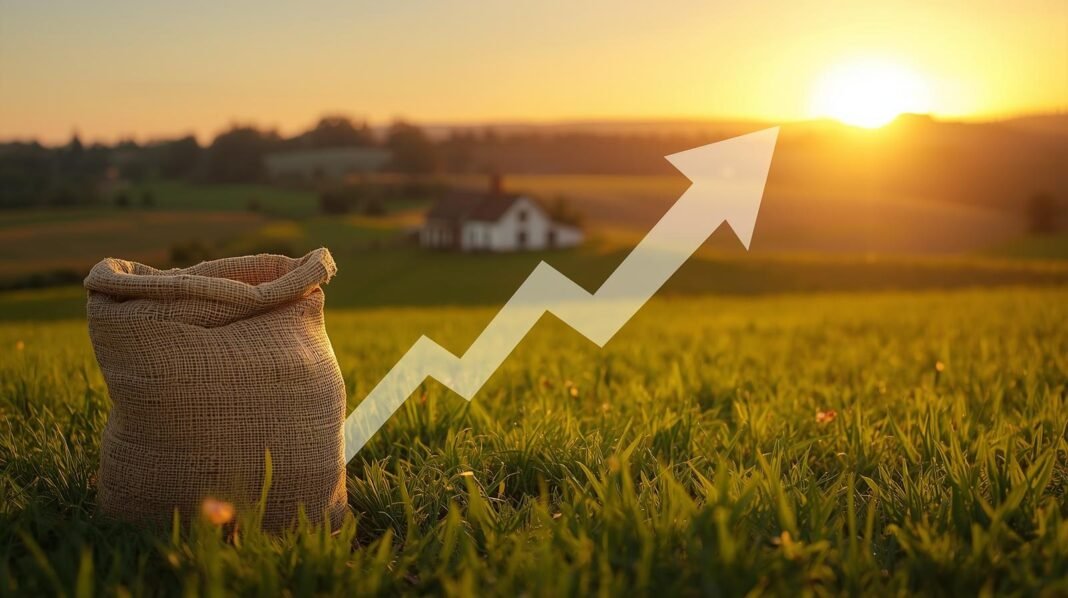Fertilizer has moved from a quiet input in agriculture to a headline commodity in 2025. Prices for urea, phosphate, and potash are rising, catching the eye of global investors.
Unlike grains or oil, fertilizer rarely commands mainstream attention—yet its strategic role in global food security makes it one of the most sensitive markets to watch this year.
Why Are Fertilizer Prices Rising in 2025?
Several forces are converging to drive prices higher:
-
Strong demand: Global fertilizer use is set to hit record levels in 2025 as major producers like the U.S., China, India, and Brazil expand crop plantings.
- Advertisement - -
Supply constraints: Limited new production capacity and logistical bottlenecks are keeping supply tight.
-
Energy costs: Fertilizer production, especially nitrogen, is highly dependent on natural gas, which has remained volatile.
-
Policy shocks: New tariffs in Europe and shifting trade flows from Russia are disrupting established supply chains.
Together, these factors have created a market where demand is robust but supply feels fragile—pushing prices upward across the board.
Is This a Boom or a Temporary Spike?
Calling the current environment a “fertilizer boom” may be misleading. What we are witnessing is a price-led rally rather than a production surge. Analysts forecast:
-
2025: Prices remain high, especially for urea, with the World Bank projecting ~15% gains.
-
2026: New capacity from Asia and the Middle East is expected to ease the tightness, potentially bringing prices down.
For investors, the big question is whether today’s rally has enough momentum to last beyond the short term.
Regional Perspectives Investors Should Watch
-
Europe: EU tariffs on Russian imports are pushing prices up sharply, creating both risks for farmers and opportunities for non-Russian producers.
-
BRICS nations: Russia is redirecting exports toward India, China, and Brazil, offering discounted supply and reshaping trade routes.
-
North America: Producers like Nutrien remain bullish, citing strong application demand despite weaker early earnings.
These regional dynamics show that fertilizer is no longer just about global balance sheets—it is about politics, trade realignments, and energy markets.
Investor Checklist: How to Position in 2025
-
Track policy changes – EU tariffs, Russian export shifts, and Chinese export rules can move prices overnight.
-
Monitor input costs – Natural gas remains the single biggest swing factor for nitrogen fertilizer producers.
-
Focus on low-cost producers – Companies with cheap feedstock access and diversified nutrients are better hedged.
-
Watch demand signals – Crop prices and farmer margins will decide how much fertilizer is applied.
-
Time your entry and exit – Treat this as a late-cycle rally; be ready to trim exposure before 2026 capacity softens prices.
-
Diversify exposure – Don’t rely solely on fertilizer equities; consider agribusiness ETFs with broader input coverage.
Risks That Could Shift the Story
-
Energy shocks: A spike in natural gas prices would prolong high fertilizer costs.
-
Farmer pushback: If crop margins narrow, fertilizer application rates could fall, weakening demand.
-
Trade normalization: Should restrictions ease or new trade channels stabilize, price pressures may fade sooner than expected.
The Agristock Outlook
For now, fertilizer in 2025 looks like a cyclical play with tactical opportunities, rather than a multi-year supercycle.
Investors should treat this rally as a late-stage upswing, positioning with quality, low-cost producers while preparing for a softer landscape beyond 2025.
Also Read
2025 Investment Trends: Are Agricultural ETFs the New Growth Story?
Top Agriculture Stocks to Watch in 2025: Global Picks for a Growing Sector
